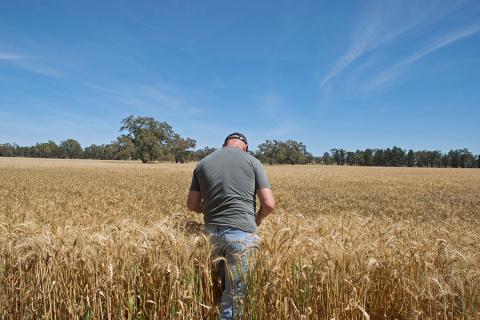Whatever your carbon farming activity or project, GHG accounting, which Topic 3 explained, is increasingly an indispensable part of farming and land management.
What type of GHG accounting do you need?
A farmer’s or land manager’s first GHG account might be as simple as one produced by the MLA Quick Start Carbon Calculator, in which it takes only a few minutes to estimate your carbon footprint. It will give an indicative starting point. It also starts your journey to collect and understand the data required for a more precise carbon footprint. Also, even a basic GHG account can yield valuable insights (for example, that fertiliser use is appropriate or that herd management is optimised) about what you’re doing right and what can be improved.
The ACCU Scheme requires robust calculations of emissions reduced or avoided and carbon stored to ensure the integrity of ACCUs and market confidence.
Climate Active certification requires setting an emissions boundary and measuring emissions. Businesses can use the Register of consultants for Climate Active certification to help prepare their reports if they don’t have expertise in GHG accounting.
Many farmers and land managers doing carbon farming for co-benefits other than earning ACCUs or Climate Active certification (for example, to improve soil health) may not keep a GHG account. However, as Topic 3 explained, a GHG account enables a farmer or land manager to:
- access low-carbon product market opportunities or meet potential market access requirements
- demonstrate their emissions and storage performance, for example, in agricultural supply chains
- work with others (such as regional NRM organisation) to reduce GHG emissions and store carbon at the landscape scale
- baseline their GHG emissions and changes in carbon storage, allowing them to benchmark and monitor their performance’
- identify on-farm productivity improvements and track the effectiveness of good farming practices.
A GHG account’s opening balance (or baseline) is a point for future reference. Changes in the account (that is, in the carbon footprint) show the overall performance of carbon farming activities in reducing emissions and storing more carbon. For example, GHGs emitted and carbon stored might be measured every 12 months to identify changes that can be further investigated.
Validation, monitoring and reporting
A farmer or land manager may choose to calculate indicative estimates of their GHG footprint to guide management decisions. But for the ACCU Scheme, the data must be high quality, verified and compliant with reporting timelines and standards.
Climate Active requires independent third-party validation for organisation and product certifications, including verification of the source data in the farmer’s and land manager’s GHG accounts. According to the organisation’s size (which is determined by various criteria), they might also need a technical assessment for certification to help ensure their reporting aligns with Climate Active program requirements. Both schemes also have monitoring and reporting requirements.
A farmer or land manager not involved in either scheme may not be required to monitor their carbon footprint over time or report externally. However, as explained above, supply chain expectations for them to do so will likely increase. Also, monitoring is a good part of adaptive planning, demonstrating successes and failures and where farmers and land managers can improve their operations.
As Topic 3 explained, many calculators are available to estimate GHG emissions and carbon stored. They range from simple and straightforward, requiring basic data while producing robust outputs, to comprehensive and tailored to particular agriculture and land management sectors. The government is developing voluntary GHG estimation and reporting ‘standards’ (VEERS) for agriculture, fisheries and forestry industries. The ‘standards’ aim to improve the quality and consistency of accounting methods and tools.

